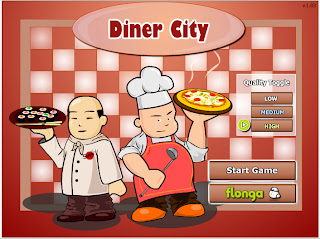 |
| http://games.t45ol.com/play/6132/diner-city.html |
The economics game Diner City demonstrated microeconomics facts. Running a business in a mixed economy has many challenges for the entrepreneur. Decisions on pricing and production are influenced by supply, demand and scarcity. The turn based game gave the player decisions on to how best to spend money on a restaraunt. Initial upgrades are inexpensive and raise the marginal revenues sharply until diminishing returns. Further upgrades are expensive with a small raise in marginal revenue.
Factors including buying additional revenue generating enterprises such as the newstand or ice cream store gave a good advantage in the early parts of the game but were unavailable by level three. It was crucial to have fast service as not to lose customers balanced with the right seating capacity.
Upgrades to the business would increase capacity and average revenue per customer, careful monitoring of money and upgrades were needed to ensure competiveness. The security system was a vital expenditure as I was robbed every time I did not buy it! Having the food delivery upgrade early pays off.
The fourth level requires expansion into another location to maximize revenue and out sell your opponent. Early expansion gave a higher percentage of market share and increased chances of winning. Each turn requires the player to weigh different options more is not always better neither is faster always better the right balance or equilibrium is the most profitable.





